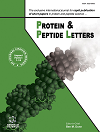
Full text loading...
We use cookies to track usage and preferences.I Understand
The spread of the COVID-19 disease is the result of an infection caused by the SARS-CoV2 virus. Four crucial proteins, spike (S), membrane (M), nucleocapsid (N), and envelope (E) in coronaviruses have been considered to a large extent.
This research aimed to express the recombinant protein of a multiepitope immunogen construct and evaluate the immunogenicity of the multiepitope vaccine that was previously designed as a candidate immunogenic against SARS-Cov-2.
Plasmid pET26b was transferred to the expression host E. coli BL21 (DE3) and the recombinant protein was expressed with IPTG induction. The recombinant protein was purified by Ni-NTA column affinity chromatography, and western blotting was used to confirm it. Finally, mice were immunized with recombinant protein in three doses. Then, the interaction of the 3D structure of the vaccine with the human neutralizing antibodies3D structures (7BWJ and 7K8N) antibody was evaluated by docking and molecular dynamics simulation.
The optimized gene had a codon compatibility index of 0.96. The expression of the recombinant protein of the SARS-Cov-2 vaccine in an E. coli host led to the production of the recombinant protein with a weight of about 70 kDa with a concentration of 0.7 mg/ml. Immunization of mice with recombinant protein of SARS-Cov-2 vaccine-induced IgG serum antibody response. Statistical analysis showed that the antibody titer in comparison with the control sample has a significant difference, and the antibody titer was acceptable up to 1/256000 dilution. The simulation of vaccine binding with human antibodies by molecular dynamics showed that Root Mean Square Deviation (RMSD), Root Mean Square Fluctuation (RMSF), Radius of Gyration, and H-bond as well as van der Waals energies and electrostatic of Molecular mechanics Poisson–Boltzmann surface area (MM/PBSA) analysis have stable interaction.
This recombinant protein can probably be used as an immunogen candidate for the development of vaccines against SARS-CoV2 in future research.

Article metrics loading...

Full text loading...
References


Data & Media loading...
Supplements

